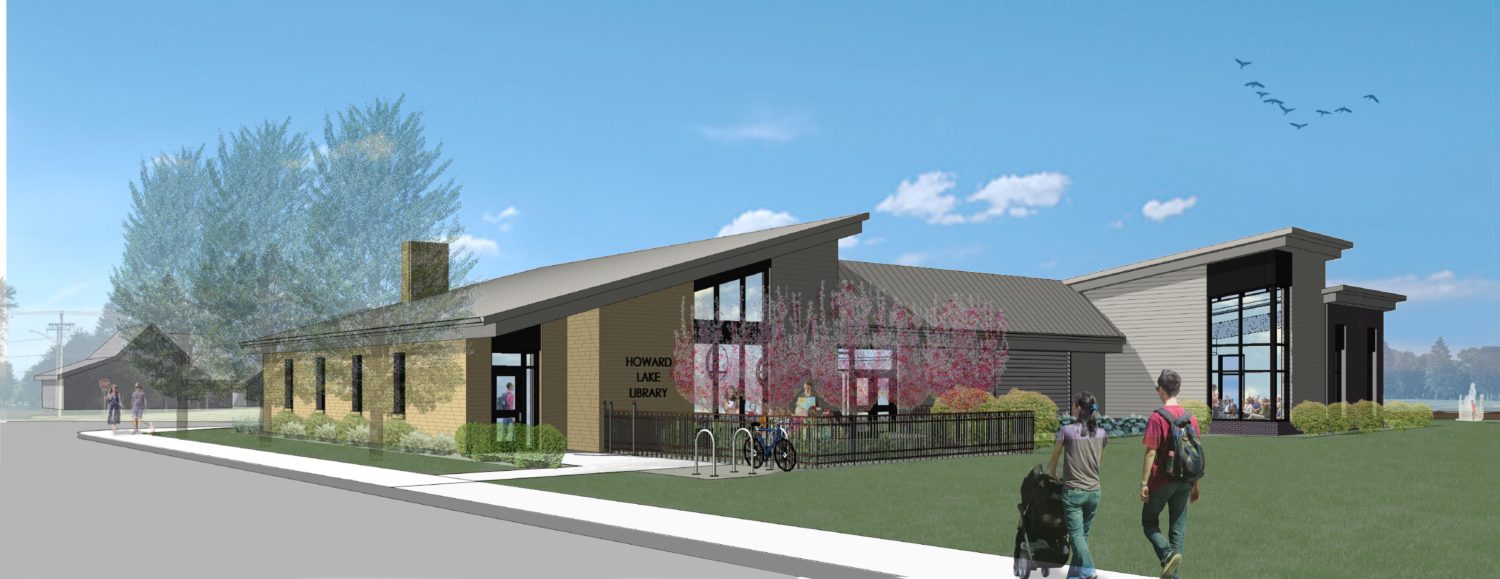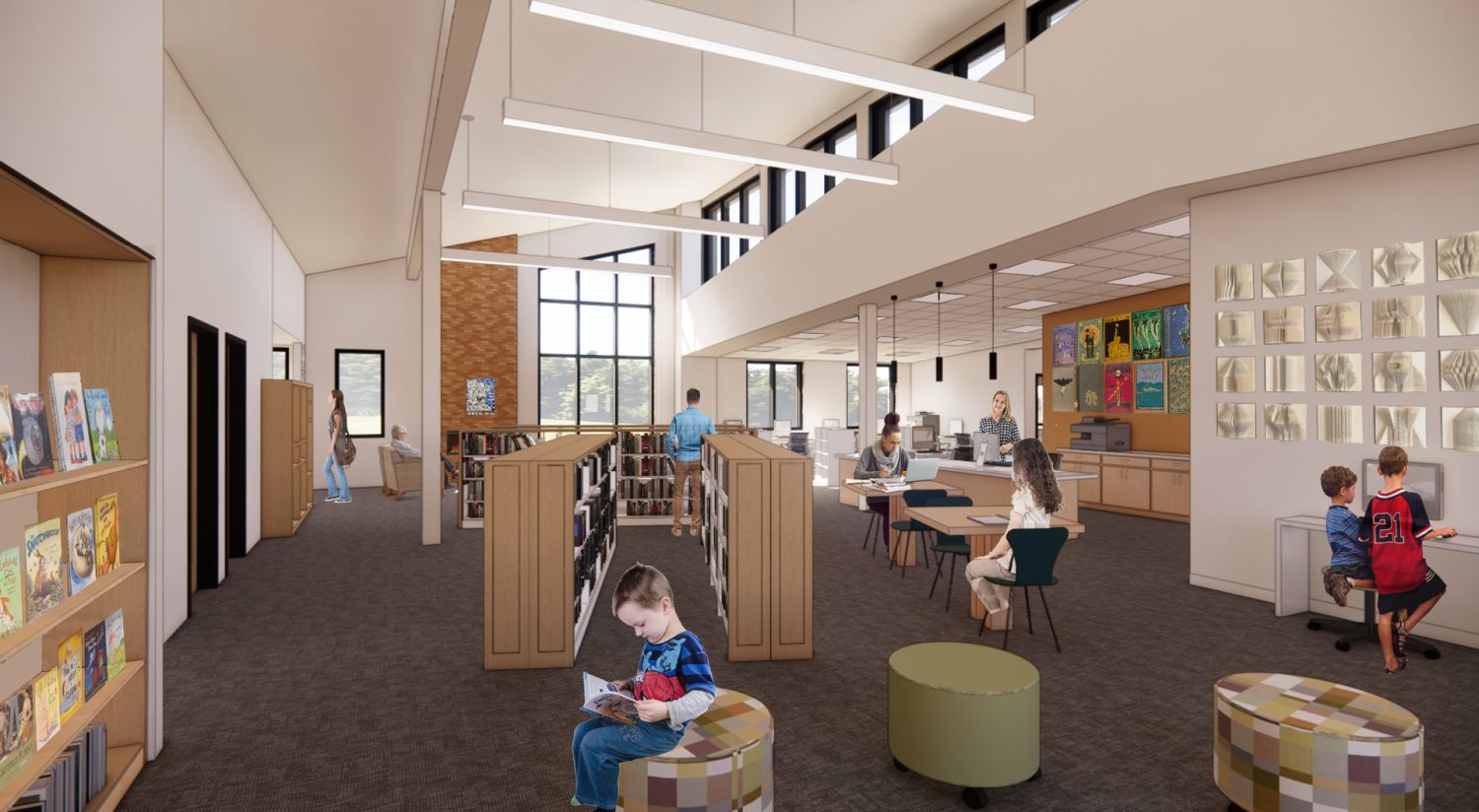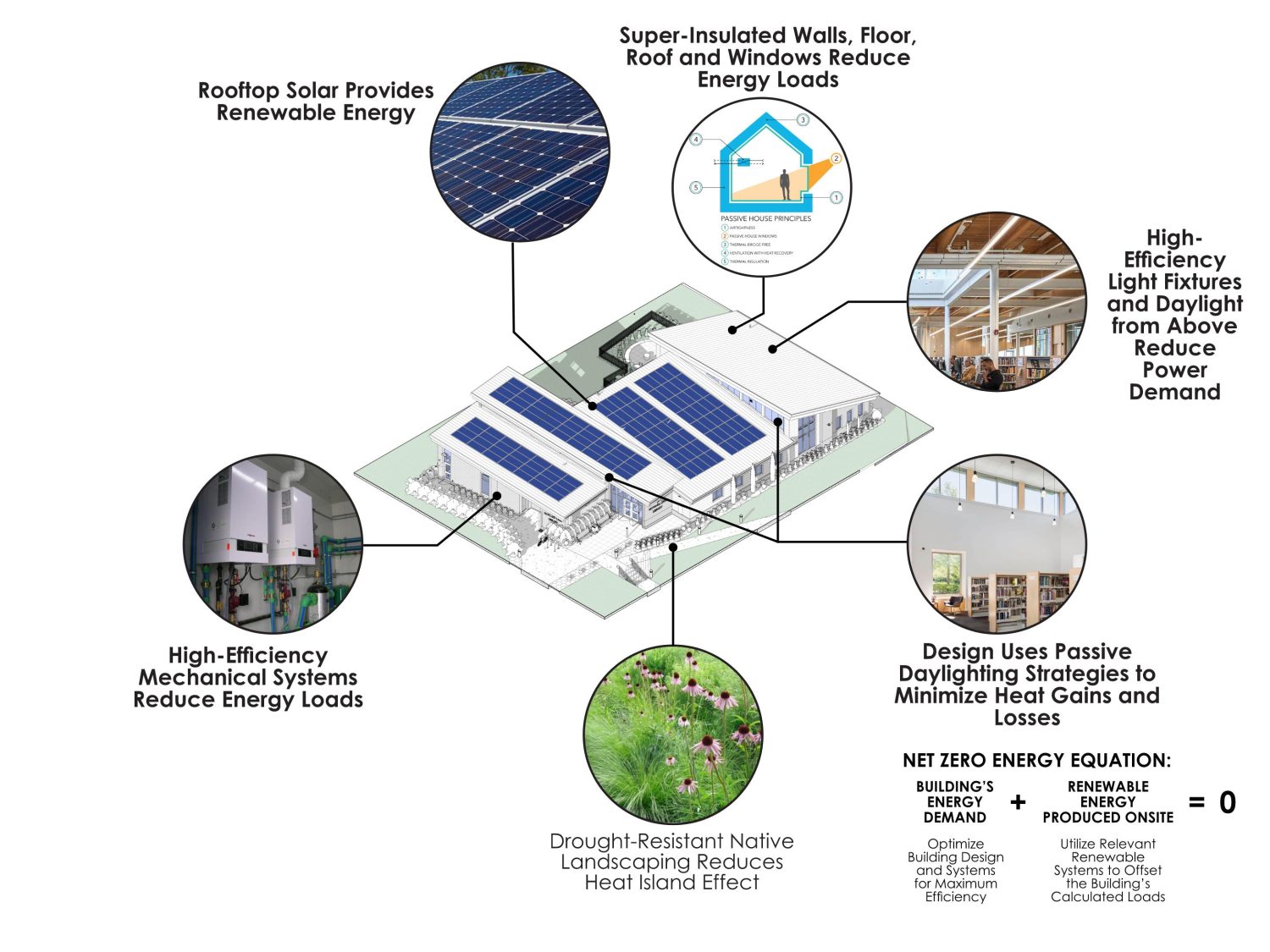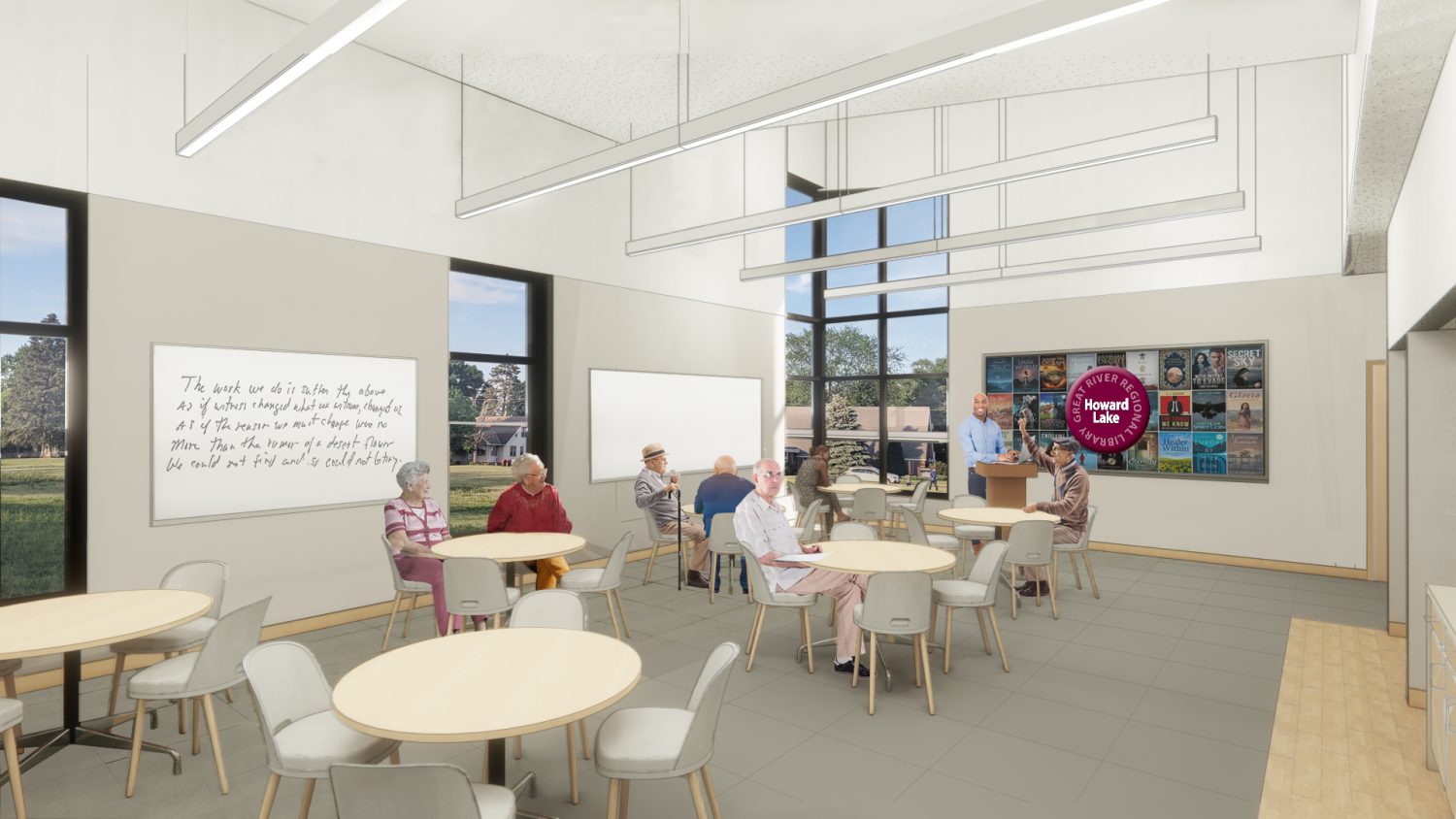BKV Group-Designed Howard Lake Library Breaks Ground as First Net Zero Library in the Upper Midwest
The new 7,000-square-foot facility features highest levels of energy efficiencies to replace antiquated 1979 building.


The Sustainable Story of Howard Lake
As a net-zero energy building, Howard Lake Library will generate energy on-site, using clean renewable resources in a quantity equal to or greater than the total amount of energy consumed. The many sustainable net-zero features include highly insulated foundations, walls and roofs; building and window placement for passive solar gain; and rooftop-mounted photovoltaics as the source of the property’s renewable energy. The project’s design and construction also comply with Minnesota’s statewide B3 Sustainable Building Guidelines, which establish sustainability goals for site, water, energy, indoor environmental quality, materials and construction.

“There are currently just a small handful of net zero libraries across the country and those tend to be sub-15,000-square-foot profiles in large urban areas. This is truly a watershed moment for the state of Minnesota as well as the city of Howard Lake and the many partners on the project dedicated to bringing to the community the highest-quality, most energy-efficient public library, which will serve as a center for education, programming and socializing for decades to come.”
Susan Morgan, Education & Library Practice Leader and Partner


